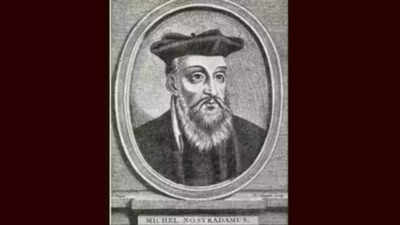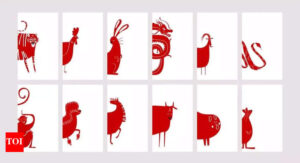Nostradamus’ death anniversary 2025: 5 Nostradamus predictions that still raise eyebrows |

Michel de Nostredame, more commonly known as Nostradamus, remains one of the most enigmatic and frequently discussed figures in the history of prophecy and mysticism. Born in 1503 and passing away on July 2, 1566, the French astrologer, physician, and seer is best remembered for his cryptic verses compiled in Les Prophéties, a collection of over 900 quatrains published in 1555. These poetic predictions have been the subject of extensive interpretation, analysis, and speculation, often being linked to major world events ranging from natural disasters to wars and political upheavals. Despite living in the 16th century, Nostradamus’s influence continues to thrive in modern literature, media, conspiracy theories, and popular culture. His work has fascinated generations, with some hailing him as a prophetic genius, while others regard his writings as vague generalizations open to interpretation. Nonetheless, his historical footprint as a seer remains widely recognized and debated.
Nostradamus early life and career in medicine
Born in Saint-Rémy-de-Provence, France, Nostradamus was trained in classical studies before studying medicine at the University of Montpellier. He initially gained recognition not for prophecy, but for his work as a physician during recurring plague outbreaks. His unconventional remedies—relying on hygiene, herbal treatments, and avoiding bloodletting—won him respect in several communities. However, despite his medical background, he was barred from completing his doctorate because of his early career as an apothecary, a profession considered manual labor and therefore unsuitable for doctors under university rules.
How tragedy turned Nostradamus toward prophecy
Nostradamus’s path toward mysticism and prophecy was catalyzed by personal tragedy. In the 1530s, he lost his wife and two children to the plague. Deeply affected by the loss and unable to save his family, he left his medical practice and began traveling across Europe. During these years, he explored various esoteric traditions, including astrology, numerology, and alchemy. These experiences laid the foundation for his later work in prophecy.In 1555, Nostradamus published the first edition of Les Prophéties, a collection of rhymed quatrains grouped in “centuries,” or sets of 100 verses. The work was cryptic and composed in a mix of French, Latin, Greek, and Occitan, likely designed to obscure meanings and avoid accusations of heresy or sorcery from religious authorities. The widespread availability of the printing press helped propel his book into public consciousness across Europe.Nostradamus’s popularity surged after one of his quatrains was interpreted as predicting the death of King Henry II of France. Following the king’s fatal jousting accident in 1559—three years after the prophecy was written—Catherine de’ Medici, the queen consort, took a keen interest in his work. She invited him to serve as her royal advisor, cementing his status as a renowned seer within European courts.
5 chilling Nostradamus predictions people believe came true
- The Great Fire of London (1666): One of Nostradamus’s quatrains states: “The blood of the just will be demanded of London, burnt by fire in the year ‘66.” This line is widely interpreted as a reference to the Great Fire of London, which occurred in 1666 and destroyed large parts of the city. While fires were not uncommon in timber-built cities, the specific mention of London and the year make the connection particularly striking.
- The Rise of Adolf Hitler: In one quatrain, Nostradamus mentions a figure called “Hister.” Although “Hister” is actually the Latin name for the Danube River, many believe it was a cryptic reference to Adolf Hitler. The same quatrain speaks of “a child born of poor people” and “a great leader of Germany,” which has led some to associate it with Hitler’s ascent and the devastation caused by World War II.
- The French Revolution: Verses describing “From the enslaved populace, songs, chants and demands” and “heads chopped off” are commonly linked to the French Revolution. This era of political and social upheaval in the late 18th century was marked by widespread executions by guillotine and the collapse of the French monarchy.
- The Death of Princess Diana: Some of Nostradamus’s writings are interpreted as foretelling the death of Princess Diana in a 1997 car accident. While her name is not mentioned directly, phrases such as “a great woman will fall” and “a sudden event” have been connected to the circumstances surrounding her passing.
- The September 11 Attacks: A quatrain that references “two steel birds” and “a great tower falling” has often been linked to the terrorist attacks on the World Trade Center on September 11, 2001. Though scholars debate the authenticity and exact translation of the verse, references to a “New City” and “earthshaking fire” have fueled speculation that Nostradamus foresaw the tragedy.
Although there is no scholarly consensus on the accuracy or specificity of these interpretations, the continued association of Nostradamus’s work with major events underscores its cultural impact.
How Nostradamus wrote his predictions in secret codes
Nostradamus claimed not to be a prophet in the traditional sense. He described his visions as coming to him through meditative or trance-like states. He would often stare into bowls of water or flames—practices rooted in scrying, a common form of divination at the time. To protect himself from the Inquisition and religious scrutiny, he encoded his prophecies using metaphor, symbolism, and multiple languages, making his verses intentionally vague.During World War II, Nostradamus’s quatrains were used for psychological warfare. Nazi operatives printed leaflets citing selected verses to suggest an inevitable German victory, attempting to demoralize the French. In response, Allied forces produced counter-propaganda using Nostradamus’s predictions to forecast German defeat. This manipulation highlighted the interpretive flexibility—and political utility—of his work.
Nostradamus in the modern age
Nostradamus’s legacy continues into the 21st century. From the tragic death of Princess Diana—linked by some to predictions about “a great woman who will fall”—to fears surrounding “apocalyptic” prophecies like the one misinterpreted to predict the end of the world in July 1999, his name surfaces regularly in media discussions, particularly during global crises or moments of uncertainty.His writings have inspired countless books, documentaries, and even fictional portrayals in television and film. Despite advancements in science and rational thought, his verses still captivate individuals seeking guidance or insight into the future.
Discover everything about astrology at the Times of India, including daily horoscopes for Aries, Taurus, Gemini, Cancer, Leo, Virgo, Libra, Scorpio, Sagittarius, Capricorn, Aquarius, and Pisces.







